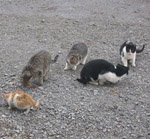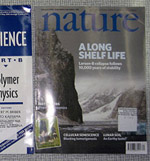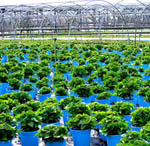A cautionary tale: botanical gardens and the hybridization of endangered species
 Evolutionary Bio,
Evolutionary Bio,  Plants
Plants Botanical gardens play an important role in conserving plant species that are highly endangered or even extinct in the wild. But as a new study shows, botanical gardens can pose their own dangers for these at-risk species, specifically from hybridization with other plants in the collection.
Jin-Ju Zhang and follow researchers from China conducted a case study of Sinojackia xylocarpa, a tree extinct in the wild but conserved in the Wuhan Botanical Garden. They found evidence that the tree has hybridized with Sinojackia rehderiana, an endangered plant of the same genus.
While both trees would not occur together in the wild, their coexistence at the botanical garden has enabled them to hybridize. Using microsattelite markers the researchers found that the paternity of 93 out of 249 seedlings from maternal S. xylocarpa trees was actually from S. rehederiana. They found that in some cases pollination distances were greater than 500 meters.
This has very serious implications for conservation of S. xylocarpa. Efforts are already underway to reestablish the species in the wild. If reintroductions of the tree use hybridized seedlings, it could contaminate the gene pool of the population.
Hopefully this issue is on the radar screen for other botanical gardens. As the study notes, over 30% of rare or endangered plant species are conserved in living collections in 1800 botanical gardens worldwide.
Based on their findings, the study authors offer the following recommendations on reducing the hybridization risk for rare and endangered plants in botanical gardens:
- Spatial isolation between species of similar genus should be considered.
- If complete isolation is not possible, other measures should be taken to manipulate pollen dispersal. These may include creating buffer zones between species and altering phonological patterns to avoid overlapping of flowering.
- Open pollinated seeds collected from the endangered species are not recommended for direct use for reintroduction.
- Testing for genetic integrity is highly recommended before reintroduction.
- Controlled pollination may be a good alternative for propagating plants with the genetic integrity needed to restore endangered plants in the wild.
--Reviewed by Rob Goldstein
ZHANG, J., YE, Q., YAO, X., & HUANG, H. (2009). Spontaneous Interspecific Hybridization and Patterns of Pollen Dispersal in Ex Situ Populations of a Tree Species ( ) that is Extinct in the Wild Conservation Biology DOI: 10.1111/j.1523-1739.2009.01357.x




Reader Comments